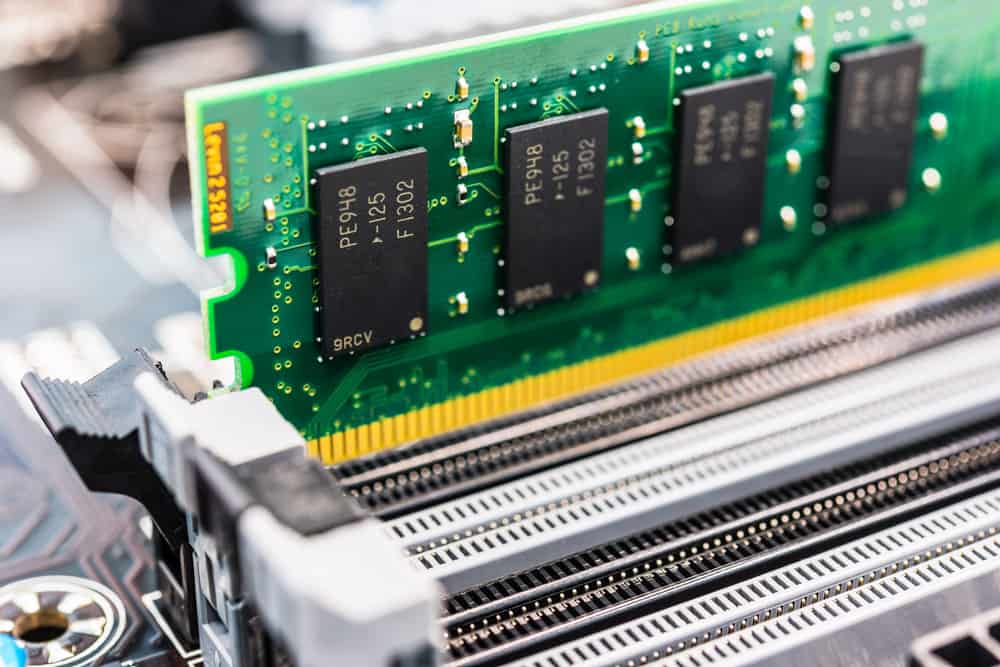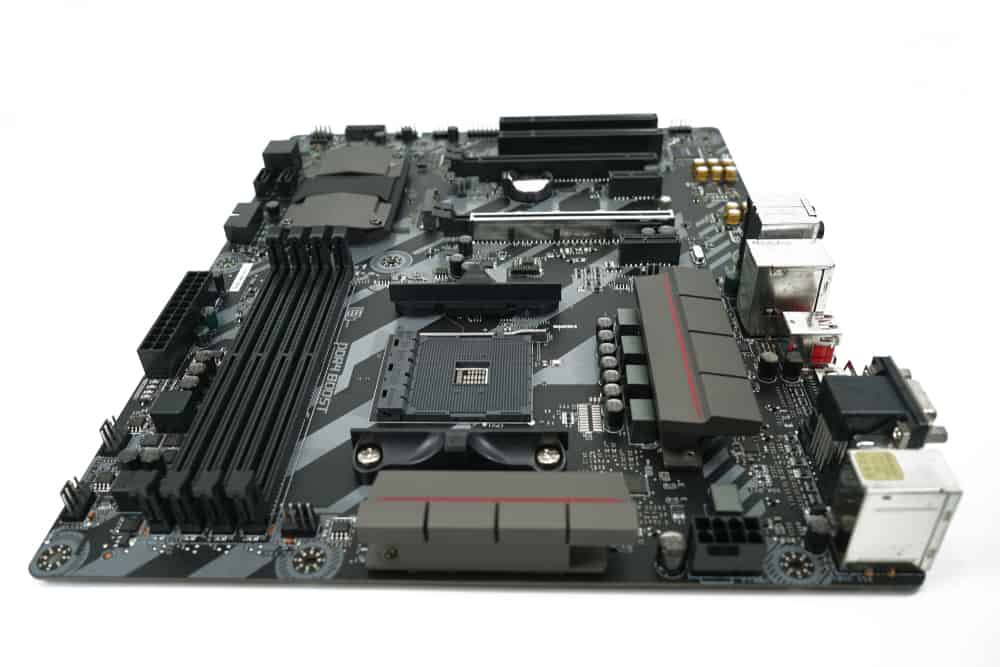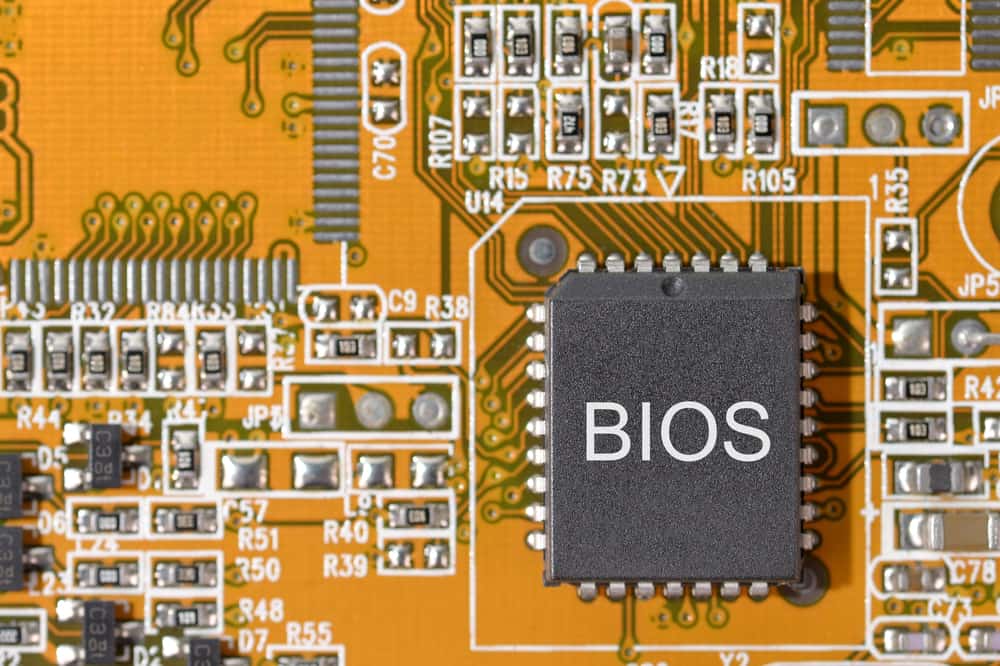Desktop Turns on and Off Continuously

You're working with your PC, and all of a sudden, it powers off only to turn on again a few moments later.
You may lose your unsaved data and even blow a fuse when the scenario repeats time after time.
What's happening?
This issue may be really frustrating, although it's not necessarily a serious one.
Sometimes, it can be resolved by simply tinkering with a few settings.
This article will walk you through the most common causes and the solutions.
Computer Turns On and Off Repeatedly (Causes, Fixes)
1. High Temperature

All computers have an auto shut-off feature that works when one of the parts gets too hot.
If the components exceed a certain temperature, they may fail, burn, and even melt, causing great risk of harm to the whole unit or the user.
Therefore, the mechanism works like a thermostat, preventing damage to your system.
This normally happens when your PC is overloaded, like playing a graphically demanding game or when your system fans stop working.
To check, hold your hand against the ventilation grills (while the computer is on) and examine the airflow.
If you don't feel any blowing, you have to repair or replace the fan.
A screeching noise is another sign of a faulty fan.
If the air puff is weak, maybe grime, dust, hair, and other particles have built up on your fan, and it can't spin well.
You can resolve the issue using a dust blower or a lint-free rag to wipe away the dirt.
You may also need to oil the fans to ease their rotation.
Make sure you check all the fans, including the case fan and the ones for the video card, CPU, and hard drive.
2. Power Source and Connections

Any issues related to PSU, the battery, power cables, and charger may shut off your computer.
If your area's standard voltage settings don't match your electricity supply capacity, your computer cannot stay running.
This website will help you find the correct voltage for your region.
As a rule of thumb, if you're a gamer or tend to run resource-intensive apps on your system, you will need a 100- to 240-watt power supply.
You also want to check your adapter current.
Any higher or lower voltage adapter can halt the connection and power your PC down.
PSU dysfunction is another potential cause for your random computer shutdowns.
If your PSU doesn't work properly, it can't transfer electricity to the motherboard, and your PC turns off to protect your hardware.
Use a power supply tester to sort out the problem, and only then, go to a repair service to replace your PSU.
Sometimes it's just better to buy a new unit because a PSU is a sensitive component, and even the slightest glitch could damage your motherboard or CPU.
Here are other things you can check:
- Make sure the power socket at the back of your case isn't loose, and the cable is secure.
- Plug your system into another outlet to see if there's something wrong with the outlet.
- Check the power cable and charger cables for possible damage.
- Examine all the wires inside your computer case, including those attached to the motherboard, hard drive, and other drivers. Check both ends to make sure they haven't come loose.
3. New Component Error

If you've just refurbished your computer or connected new peripherals, chances are your PC isn't compatible with them.
Remove the new hardware and see if the problem disappears.
Another way to check is going to your device manager.
As the name implies, the section helps you manage all the devices attached to your system, and it'll let you know in case of hardware error.
4. RAM

Sometimes, the component responsible for your regular shutdowns is your memory, and the only remedy for this issue is to open the case, take out the RAM module(s), and put it (them) back.
Follow the instructions below:
- Pull the ejection clips so that the memory module pops out of its place.
- Carefully hold it between your hands and put it back into the existing notch. Make sure both sides of the board fit into the margin slots.
- Push it down gently until the holding levers lock it in place.
- Repeat the process for each module, and make sure you match them with the corresponding colors.
- Ensure all the clamps are closed, and the modules are firmly in place.
5. Motherboard

Issues with your motherboard circuit can cause your device to shut off right after you turn it on.
Often, you have to replace the entire motherboard to fix the issue.
This task is very demanding and pricey at the same time.
Therefore, you should do it as a last resort and only if you're sure it's causing the problem.
Consult with an expert and let them replace it if needed.
6. Virus or Malware

If you can't find a hardware cause, it's time to search for software-related issues.
The best place to start is your Windows System Defender.
Some malicious software and viruses can alter your computer's settings, wreak havoc on its operating system, and cause frequent shutdowns.
Go to search and type "Virus and Threat Protection."
Next, click "Advanced scan" and select "Full Scan" to inspect the whole system for infections.
Once the process is over, delete the identified threats.
Then, restart your computer and check if the issue still exists.
You can also use a third-party antivirus program, but you must make sure it's reliable and upgrade it to the latest version.
7. Obsolete BIOS

BIOS is a firmware that the processor uses to boot your computer.
If it doesn't work properly or becomes out-of-date, it fails to initialize your Windows properly.
Look for BIOS updates as a quick solution.
However, you should remember that it's a technical procedure.
If you don't do it properly, it can cause serious, permanent harm to your system.
Download the newest BIOS version from your motherboard manufacturer's website.
Then, use its tutorial to install the updates, step by step.
Alternatively, ask a professional to do it for you.
8. Fast Startup Function

Fast Startup is an option in Windows 8 and 10 that starts your computer more quickly.
It does so by keeping your computer somewhere between the "shutdown" and "hibernate" modes.
However, since some computers don't support this hybrid mode, it may cause unintended boot-time complications.
Deactivating the feature helps you fix the issue:
- Type "Choose a power plan" in search and click. (You can also go to "Control Panel" and then "Power Options.")
- Press "Choose what the power buttons do."
- Select "Change settings that are currently unavailable."
- Find the "Shutdown Settings" section and disable the Fast Startup feature.
- Make sure you save the changes before quitting.
9. Incompatible Drivers

Device drivers are computer programs that teach your operating system how to interact with specific hardware.
If a driver malfunctions, it could cause unexpected software behavior, including frequent, sudden shutdowns.
This is a likely problem, especially if you've messed with your system settings recently.
Since there are so many drivers on a computer, an average user can't really tell which one is causing the issue.
Driver Easy is an assistant software that helps you with this.
Here's how it works:
- Download and install the application.
- Let it detect the issue by pressing the "Scan Now" button.
- Select "Update All" to install the best and latest version for your drivers.
Note: This method requires you to buy the Pro version of the application. If you don't want to pay, you may want to try another tool.
You can also do it manually or with the help of your Windows Driver Verifier and Device Manager.
Manual Fix:
- Go to your Device Manager, and you'll see a complete list of your system drivers.
- Click on them one by one to update them to the latest version.
- If this doesn't work, try uninstalling and then reinstalling them.
- If you've recently updated a driver, roll it back to the previous version.
10. Operating System

If the nightmare started right after a Windows update, try these methods to remedy the situation.
- Restore Points
A Restore Point lets you revert the computer's data, such as driver configuration, software, and registry, to the settings of an earlier date.
This way, most new software errors will disappear, and your device will likely start to work as it did in the perfect old days.
Here's what you need to do:
- Right-click on the Start Menu and go to the Control Panel.
- Tap "System and Security" and open "File History."
- Go to "System Restore" and press "Next."
- A list of all previous restore points will appear in front of you.
- Choose the one you like and confirm.
- Restore the Factory Settings
Restoring to default settings doesn't mean deleting all your data.
It only removes your adjusted settings and programs.
All you need is to type "Reset" in the search bar below the screen and hit "Reset this PC."
- Reinstall Windows
Installing Windows seems like a big job to some users, which is why they usually avoid it unless there's no other choice.
Accept it or not, it's sometimes your only way to solve this problem.
Unlike the two above methods, this one erases all of your personal files.
Therefore, it is imperative to back up your files before initiating the process.
Other Software Failures

Windows registry failures, suboptimal settings, corrupted or junk files, and malfunctioning programs are other possible causes of random shutdowns.
As a last resort, try these quick tips to troubleshoot your computer:
1. Use the System Troubleshooter
Windows 10 features an application named Windows Store Apps that automatically finds and fixes your possible software issues. Sometimes, running this feature helps you work out the continuous shutdowns.
- Go to "Control Panel" from the search option in the taskbar.
- Spot the "Troubleshooting" button among other options and click.
- Press "Hardware and Sound."
- Find "Windows Store Apps" below the Windows section and click it.
- Open the "Advanced" link and select "Apply repair automatically."
- Press Next so that the system starts troubleshooting.
2. Run the System File Checker
System File Checker is an integrated utility in all Windows versions that restores all the missing or corrupted files in your system.
Do as follows to reap the benefits of this feature.
- Search "cmd" from Start.
- Right-click on "cmd.exe" among the appearing results.
- Press "Run as Administrator" and confirm your choice.
- Copy and paste the following text in the new box that comes up. (Make sure you include the spaces before each '/' symbol)
- DISM.exe /Online /Cleanup-image /Restorehealth
- The computer starts scanning, and the process takes about half an hour.
- Once you receive a notification that says "finished," type sfc/scannow and hit the Enter button.
Source: https://www.thetechwire.com/computer-turns-on-and-off-repeatedly/
0 Response to "Desktop Turns on and Off Continuously"
Post a Comment